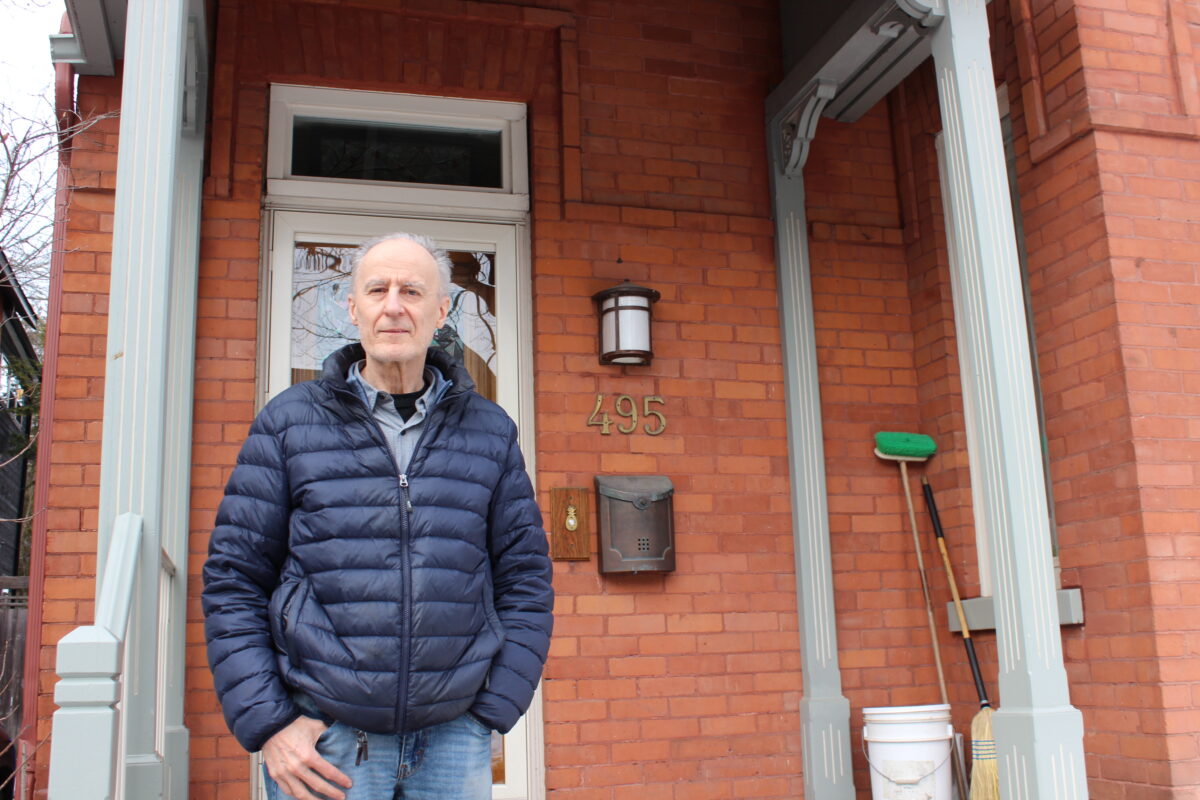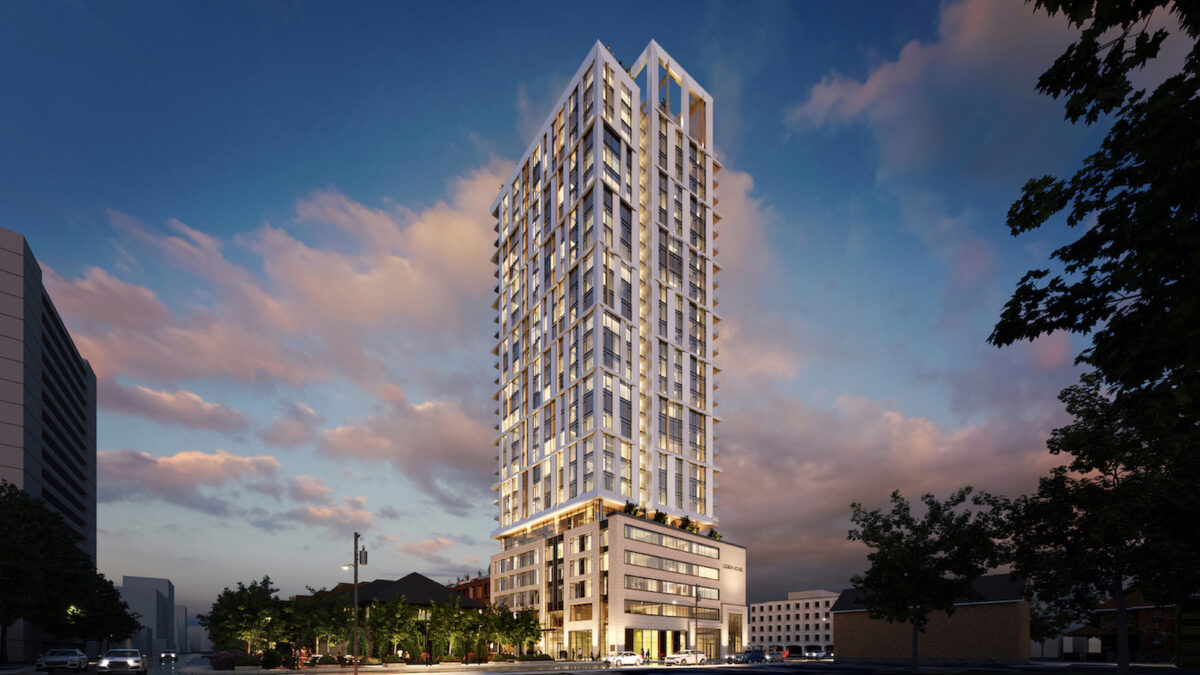After months of debate and design revisions, Ottawa city council has approved the application to alter 359 Kent St. in preparation for the construction of a 289-unit, 27-storey residential highrise.
The property, which has served as the headquarters of the Royal Canadian Legion Command, is a historic mid-century office building. Ottawa’s built heritage committee had earlier approved a plan to incorporate the landmark building’s facade into the design of the residential tower.
The tower, which has been branded an “iconic” structure for the neighbourhood and the city’s skyline, will feature a setback that distinguishes the old Legion headquarters from the new building. Efforts will be made to preserve the old facade to maintain the building’s street-level appearance.

Some residents on residential, low-rise Gilmour Street, which intersects Kent, say the project is too tall given the scale of the neighbourhood.
An April 2023 letter signed by Centretown Community Association president Mary Huang said the proposal is “conventional and ordinary” and “far too high for this location.”
“My neighbours and I have been talking and we find it’s a bit absurd. It’s just out of proportion to the general neighbourhood.”
Jean Marc Larivière, Centretown resident
Jean Marc Larivière, 68, has lived with his partner on Gilmour Street for 18 years. He said he doesn’t understand why such a towering highrise is to be built in a neighbourhood of single-family houses.
“My neighbours and I have been talking and we find it’s a bit absurd,” Larivière said. “It’s just out of proportion to the general neighbourhood.”
Larivière and the CCA are concerned about lengthy construction times, scale issues and a loss of community character.
“I feel that 27 storeys is on an inhuman scale,” Larivière said. “It doesn’t fit with how human beings live amongst one another.”

Somerset Coun. Ariel Troster, who represents the area, disagrees.
“The idea that height is alienating is kind of an outdated concept,” Troster said. “You can do a lot with a public realm to make it really inviting. You can have mixed-use so you can have businesses and services available at ground level, which is something that people want.”
Developer Taggart Realty Management has promised that the space will serve the community.
The development “provides a privately owned public space in the centre of the site and provides transition to the adjacent heritage district through a thoughtfully designed four-storey podium,” the company stated in its submission to the city.
Additionally, Taggart has proposed two public use spaces, “dedicated to cultural and institutional users providing a unique civic function within the Centretown community.”

Troster acknowledged residents’ concerns about construction pains, noting that more than 100 public works projects were carried out in Somerset ward last summer.
Regardless, Troster said the city is under pressure to build 145,000 homes over the next 10 years to accommodate a projected influx of new residents.
“It is short and medium-term pain for long-term gain,” Troster said. “The cost of living is out of control and one of the ways we can bring down the cost is to build more housing.”
Larivière said he knows there will be benefits that come with the development, but also that projects of this scale should be restricted to the peripheries of residential neighbourhoods, citing the recent slew of towers that have been erected along Carling Avenue.
“It is short and medium-term pain for long-term gain. The cost of living is out of control and one of the ways we can bring down the cost is to build more housing.”
Somerset Coun. Ariel Troster
Losing economic and racial diversity was another of Larivière’s concerns. He fears that if the new residential units are too costly, the neighbourhood could become gentrified and lose its lower-income residents.
“It’s absolutely crucial for us to live in diverse communities because that’s the only way we can truly learn to live with one another,” Larivière said.
But Troster offered assurances that since much of the surrounding housing is controlled by the Centretown Citizens Ottawa Corporation, a community-owned housing organization, many homes in the area will remain permanently affordable.

“We don’t want a city where people who got into the housing market 20 or 30 years ago are the only ones who can afford to live in a city,” Troster said.
Troster said zoning reforms will enable more high-density housing in downtown Ottawa and a larger stock of housing options for the growing city.
“Residents all over Ottawa are going to have to learn to live with more density,” Troster said.
While Larivière isn’t on board with a highrise being built near his home, he said he understands concessions are necessary.
“Nothing manifests itself without its opposites,” he said.




